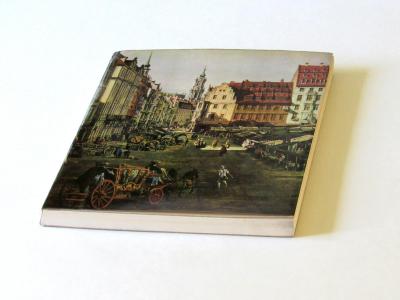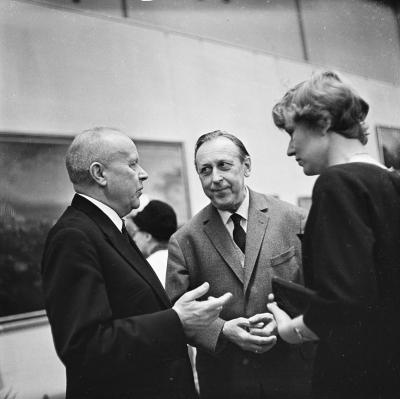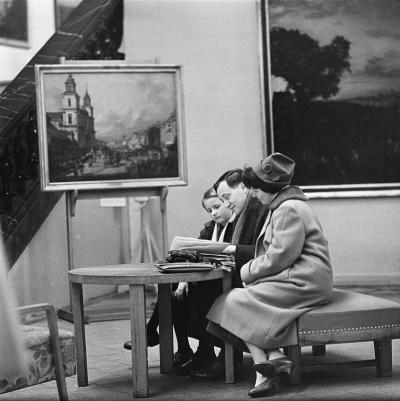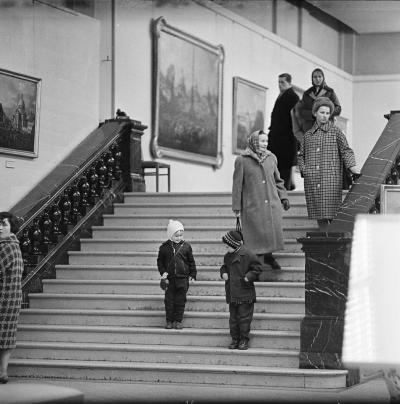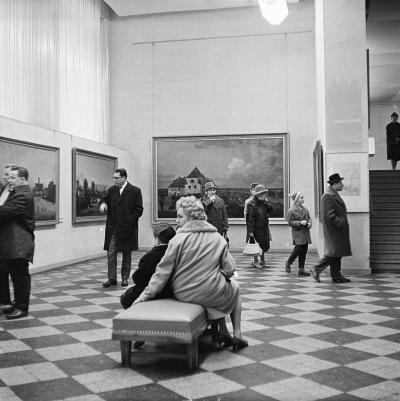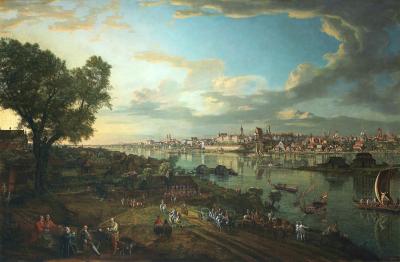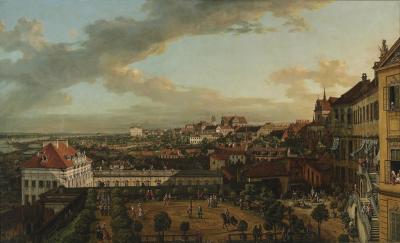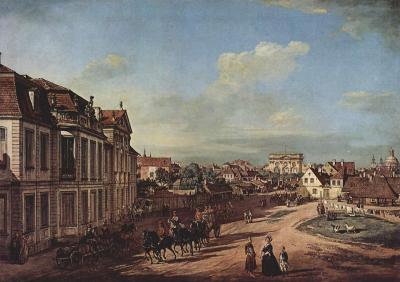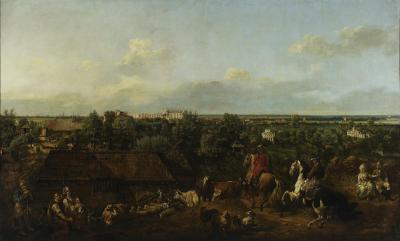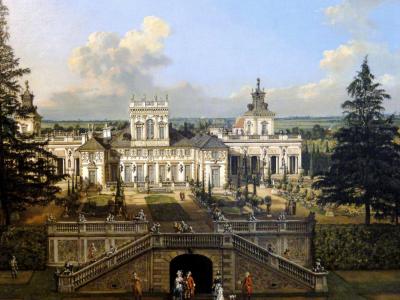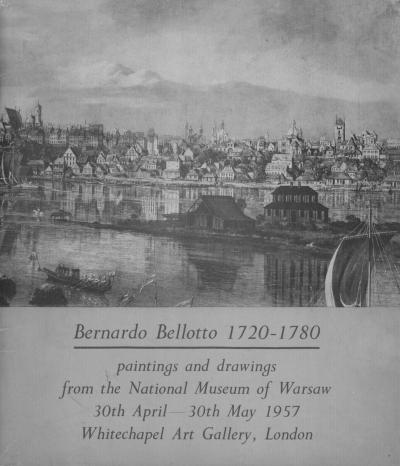The German-Polish Canaletto Exhibition in Dresden, Warsaw and Essen 1963-1966
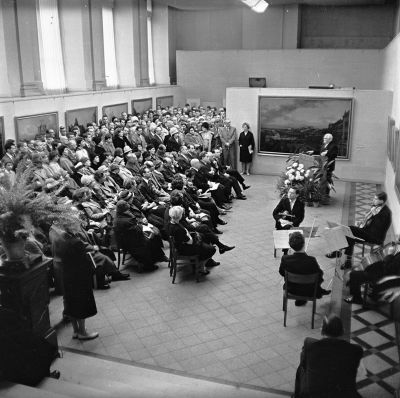
Beitz was able to reap the reward for his efforts in 1963. In March Germany and Poland made a trade agreement intended to “begin a new era in German policies towards Eastern European countries“.[15] During this time Beitz, Cyrankiewicz and Gomułka who, as in previous years, had met up in the German Pavilion at the trade fair in Posen/Poznań, had become close friends.[16] When Beitz visited the Canaletto exhibition in Warsaw in 1964 he used his contacts with the Minister for Foreign Trade, Trąmpczyński, to meet up with a Krupp associate in East Berlin and the Soviet ambassador Andrei Smirnow, not only to arrange for the Dresden-Warsaw exhibition to be taken to the Villa Hügel in Essen but also to include loans from the Hermitage and the Pushkin Museum. The exhibition opened in Essen on 28th April 1966. Krupp agreed to provide the insurance sum of around 12 million marks. In March the business head of the Villa Hügel, Carl Hundhausen, sent an invitation to the GDR Minister of Culture Klaus Gysi to be present at the opening in Essen in recognition of the loans from the Dresden Painting Gallery.[17] But the foreign office intervened and the Federal Chancellor Ludwig Erhard decided to refuse to allow Gysi to enter the country. As a result Hundhausen was forced to withdraw his invitation by telegram.[18] The reasons for these measures were never made public. The GDR press reported the events in critical articles and commentaries[19] and the State Art Collections in Dresden published an open letter protesting against the refusal to grant Gysi permission to travel.[20] In the West German weekly “Die Zeit” Gottfried Sello condemned the decision as: “a shameful and incomprehensible measure: if pictures are allowed to pass through the border without hindrance […]the men responsible for the pictures and the loans should also be allowed to travel”.[21] A positive commentary in the “Frankfurter Rundschau” remarked that this was the first time that an “exhibition in the Federal Republic had been created with fundamental help from countries to the east”. The “Stuttgarter Zeitung” wrote: “The exhibition in the Villa Hügel is, so to speak, the intellectual table decoration for trade and the symbol of a change of policy by the Krupp firm towards Eastern Europe.”[22]
Axel Feuß, August 2015
Further reading:
Ludwig Mehlhorn: Die Sprachlosigkeit zwischen Poland and der GDR. Eine Hypothek, in: Deutsche and Poland. 100 Schlüsselbegriffe, edited by Ewa Kobylińska, Munich 1993, pp. 522-528.
Wolf-Dieter Eberwein / Basil Kerski (eds.): Die deutsch-polnischen Beziehungen 1949-2000. Eine Werte- and Interessengemeinschaft, Opladen 2001.
Basil Kerski / Andrzej Kotula / Kazimierz Wóycicki (eds.): Zwangsverordnete Freundschaft? Die Beziehungen zwischen der GDR and Poland 1949-1990, Osnabrück 2003.
Sergiusz Michalski: Eine kalte Freundschaft. Die Beziehungen zwischen der Volksrepublik Poland and der Deutschen Demokratischen Republik, in: Tür an Tür. Poland - Deutschland. 1000 Jahre Kunst and Geschichte, edited by Małgorzata Omilanowska, Cologne 2011, pp. 686-691.
Bernardo Bellotto named Canaletto in Dresden and Warschau, Exhibition from 8 Dezember 1963 until 31. August 1964, edited by the Generaldirektion der Staatlichen Kunstsammlungen Dresden, Albertinum, Dresden 1963.
Summary of the Scientific Conference Bernardo Bellotto named Canaletto, organized at 12. and 13. Mai 1964 by the Staatlichen Kunstsammlungen Dresden, in Gemälde Galerie Alte Meister on the occasion of the German-Polish Bellotto-Exhibition, Dresden 1964 (15 pages).
Drezno i Warszawa w twórczości Bernarda Bellotta Canaletta. Wystawa zorganizowana wspólnie przez państwowe zbiory sztuki w Dreźnie, Galerie̜ Dawnych Mistrzów i Muzeum Narodowe w Warszawie. Catalogue, Warsaw 1964
Bernardo Bellotto Caneletto. Wystawa zorganizowana wspólnie przez Państwowe Zbiory Sztuki w Dréznie, Galerie Dawnych Mistrzów i Muzeum Narodowe w Warszawie przy współudziale Kunsthistorisches Museum w Wiedniu, Pánstwowego Ermitazu w Leningradzie i Muzeum Sztuk Plastycznych im. A.S. Puszkina w Moskwie. Przewodnik. [Wystawa] 1964-1965, Muzeum Narodowe w Krakowie, Kraków 1964
Bernardo Bellotto named Canaletto. Exhibition under the direction of: Staatliche Kunstsammlung Dresden, Nationalmuseum Warschau, Kunsthistorisches Museum Vienna organized by the Austrian Cultural Association, Vienna , Oberes Belvedere, April 29 to July 25 in 1965, Vienna in 1965.
European vedute of Bernardo Bellotto named Canaletto. Exhibition from April 29 to July 31 in 1966 in the Villa Hügel in Essen, edited by the Villa Hügel e.V.,
[15] Der Spiegel (1963), no. 26, p. 25.
[16] Der Spiegel (1963), no. 26, p. 26.
[17] Letter of invitation (22/3/1966), illustrated in Neues Deutschland (21/5/1966).
[18] Illustration in Neues Deutschland (21/5/1966).
[19] Berliner Zeitung (21/5/1966 and 22/5/1966); Neues Deutschland (21/5/1966).
[20] Neues Deutschland (26/5/1966).
[21] Die Zeit (1966), no. 27.
[22] Press Release: 50 Jahre Kunst in der Villa Hügel. Chronologie eines außergewöhnlichen Mäzenatentums (April 2003), villahuegel.de.
